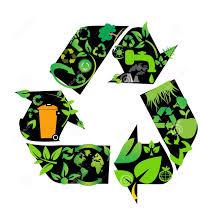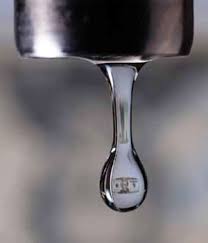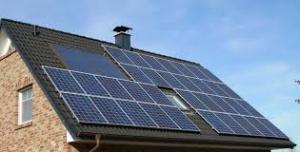[end_tabset]
Now that you are moving, what better time to start the journey of living green. We, at KEY Moving, believe that energy efficiency and recycling of everyday goods not only help our planet but can help your home be a top-notch living breathing green machine.  Over 85% of Americans today express concern about health and the environment, but only a small fraction say they know where to begin. Whether you are concerned about climate change, personal health, or just want to live more lightly on the planet KEY Moving can help you get past the worry and take positive action to improve both your health and the health of our environment. Doing your part by living green in your own home is much simpler than you might think and the results are much more far-reaching than they seem. The more energy efficient your home is, the more money you can save and the bigger your positive impact on the environment can me. Now how to decrease your carbon footprint? In addition to the basic recycling of paper and plastic products, we have compiled a list of tips that can help you achieve a more eco-friend lifestyle.
Over 85% of Americans today express concern about health and the environment, but only a small fraction say they know where to begin. Whether you are concerned about climate change, personal health, or just want to live more lightly on the planet KEY Moving can help you get past the worry and take positive action to improve both your health and the health of our environment. Doing your part by living green in your own home is much simpler than you might think and the results are much more far-reaching than they seem. The more energy efficient your home is, the more money you can save and the bigger your positive impact on the environment can me. Now how to decrease your carbon footprint? In addition to the basic recycling of paper and plastic products, we have compiled a list of tips that can help you achieve a more eco-friend lifestyle.
Cooling and Heating – Nearly half of your energy costs go toward cooling and heating your home. It’s simple to reduce the amount of energy you use as well as to improve the air quality you have. -Change your filter every three months -Have your HVAC system tuned up yearly -Seal your heating and cooling ducts and check your roof insulation -Install a programmable thermostat
Limit Lighting – Lighting your home accounts for about 15% of your homes electric use so making changes in this area can help you save.
-Replace your existing bulbs with energy-efficien t fluorescent bulbs which can last up to ten times longer as well as use 75% less electricity. -Consider sensors that turn lights off when you leave the room. Outdoor motion-sensor lighting also saves on energy and makes your environment safer.
t fluorescent bulbs which can last up to ten times longer as well as use 75% less electricity. -Consider sensors that turn lights off when you leave the room. Outdoor motion-sensor lighting also saves on energy and makes your environment safer.
Windows – Today’s energy-efficient windows can substantially help save on your electric and gas bills.
Water – Wasted  water is not only costly but also difficult to get back. -Dripping faucets may seem harmless but it is surprising the amount of water that is lost. For example, one faucet that drips 4 drips per minute wastes 138 gallons of water each year. -Older toilets use up to five gallons per flush compared to about 1.6 gallons of water used in newer toilets. Replacing an old toilet can save up to 10,500 gallons of water each years.
water is not only costly but also difficult to get back. -Dripping faucets may seem harmless but it is surprising the amount of water that is lost. For example, one faucet that drips 4 drips per minute wastes 138 gallons of water each year. -Older toilets use up to five gallons per flush compared to about 1.6 gallons of water used in newer toilets. Replacing an old toilet can save up to 10,500 gallons of water each years.
Maintain Appliances – If you are either building your new home or renovating it, it is easy to go green in your choice of building materials. You can ask about recycled steel, insulated concrete forms, plant-based foam, straw bales, cool roofing and recycled wood/plastic composite lumber.
Solar Energy – You may have the opportunity to use solar energy in your home if you live in an area which receives adequate sunlight or if your home has a roof that is not shaded. While going solar may be cost prohibitive, there are certain federal and state tax credits and rebates available if you do. Looking into the future, making your home operate with solar energy will be less and less expensive. Basically, the thought process is to use less and conserve more. Less make-up, less toilet paper, less printer paper, etc. And here are the basics for green living, some are big, but others are doable on a daily basis: -Turn your lights off. -Drink tap water or use a Britta filter for your water. Stop buying it in plastic. -Stop junk mail. -Reduce your waste. -Compost. -Bike or walk if you don’t need to drive. -Eat organic or locally-grown foods or even better, grown your own little garden. -No more aerosol. -Plant a tree. -Go chemical-free in your daily products.
and rebates available if you do. Looking into the future, making your home operate with solar energy will be less and less expensive. Basically, the thought process is to use less and conserve more. Less make-up, less toilet paper, less printer paper, etc. And here are the basics for green living, some are big, but others are doable on a daily basis: -Turn your lights off. -Drink tap water or use a Britta filter for your water. Stop buying it in plastic. -Stop junk mail. -Reduce your waste. -Compost. -Bike or walk if you don’t need to drive. -Eat organic or locally-grown foods or even better, grown your own little garden. -No more aerosol. -Plant a tree. -Go chemical-free in your daily products. -Choose natural personal care. -Donate or recycle old clothing, shoes…even your rubber flip flips. -Buy organic or recycled clothing. -Invest in solar energy. -Support locally-owned businesses. -Raise healthy, conscious children.
-Choose natural personal care. -Donate or recycle old clothing, shoes…even your rubber flip flips. -Buy organic or recycled clothing. -Invest in solar energy. -Support locally-owned businesses. -Raise healthy, conscious children.
 Over 85% of Americans today express concern about health and the environment, but only a small fraction say they know where to begin. Whether you are concerned about climate change, personal health, or just want to live more lightly on the planet KEY Moving can help you get past the worry and take positive action to improve both your health and the health of our environment. Doing your part by living green in your own home is much simpler than you might think and the results are much more far-reaching than they seem. The more energy efficient your home is, the more money you can save and the bigger your positive impact on the environment can me. Now how to decrease your carbon footprint? In addition to the basic recycling of paper and plastic products, we have compiled a list of tips that can help you achieve a more eco-friend lifestyle.
Over 85% of Americans today express concern about health and the environment, but only a small fraction say they know where to begin. Whether you are concerned about climate change, personal health, or just want to live more lightly on the planet KEY Moving can help you get past the worry and take positive action to improve both your health and the health of our environment. Doing your part by living green in your own home is much simpler than you might think and the results are much more far-reaching than they seem. The more energy efficient your home is, the more money you can save and the bigger your positive impact on the environment can me. Now how to decrease your carbon footprint? In addition to the basic recycling of paper and plastic products, we have compiled a list of tips that can help you achieve a more eco-friend lifestyle. t fluorescent bulbs which can last up to ten times longer as well as use 75% less electricity. -Consider sensors that turn lights off when you leave the room. Outdoor motion-sensor lighting also saves on energy and makes your environment safer.
t fluorescent bulbs which can last up to ten times longer as well as use 75% less electricity. -Consider sensors that turn lights off when you leave the room. Outdoor motion-sensor lighting also saves on energy and makes your environment safer.


